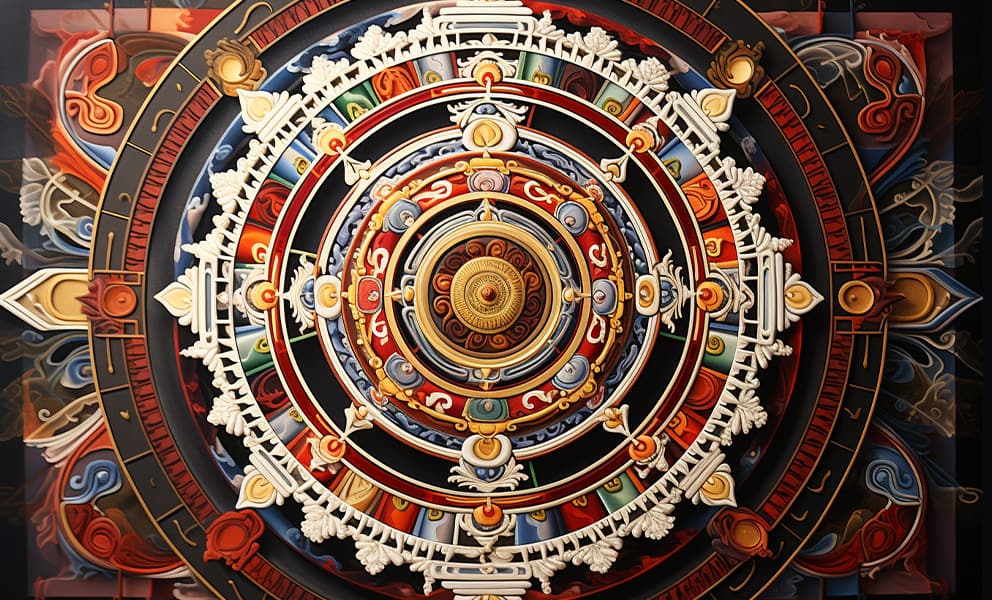MANDALAS are intricate replicas of holy mansions, laboriously constructed and destroyed soon after their completion. They can be made of jewels, flowers, dyed rice, colored stones or colored sand. Sand, traditionally made from crushed precious stones, is the favored material for its value and for the precision required to create the details.
Tradition says each grain of sand is charged with the blessings of the ritual process so that the entire sand mandala is a store of spiritual energy. The artists are Tibetan Buddhist monks who, tradition has it, learned the construction techniques from qualified teachers who learned from those before them in an unbroken line from the original Buddha who lived in the 6th century B.C. in India.
They first construct the base, called the the-pu, then they measure out and draw the lines of the “architecture” of this flat, stylized floor plan of a five-story building using a straight-edge ruler, compass and white ink pen.
THE mandala, as a mansion expressed in geometric design, includes a foundation, four entrances, walls and other architectural elements. The colored sand is applied through the end of a metal funnel, which is rasped against another funnel that sprinkles a fine stream of sand. The artists begin at the center and work outward.
The Kalachakra deity resides in the center of the mandala, tradition says, and his palace is made of the mandalas, which roughly means “centers,” of human experience, one within another: the mandala of the body, that of speech, that of mind, and the one in the center – wisdom and great bliss. The mansion is divided into four quadrants, each with walls gates, and a center.
The colors represent the elements – black, in the east, is associated with the winds; red, in the south, symbolizes fire; yellow, in the west, symbolizes earth, and white, in the north, represents water. The square palace of the 722 deities is seated upon the first concentric circle, which represents the earth. The other circles – water, fire, wind, space, and consciousness – extend beyond the wall of the palace. The outer circles, which represent the cosmos, are an example of Tibetan astrology.
The ten wrathful deities who reside in each of the outer circles of the mandala serve as its protectors. The mandala is made in the spirit of the impermanence of the human condition and the non-attachment to things, so it is destroyed in a ritual of sand removal and swept finally into a container. Then the monks bless the sand, carry it to a body of water and pour it in.
FOR more info, see the Web site of the Tibetan Government in exile at www.tibet.net.

